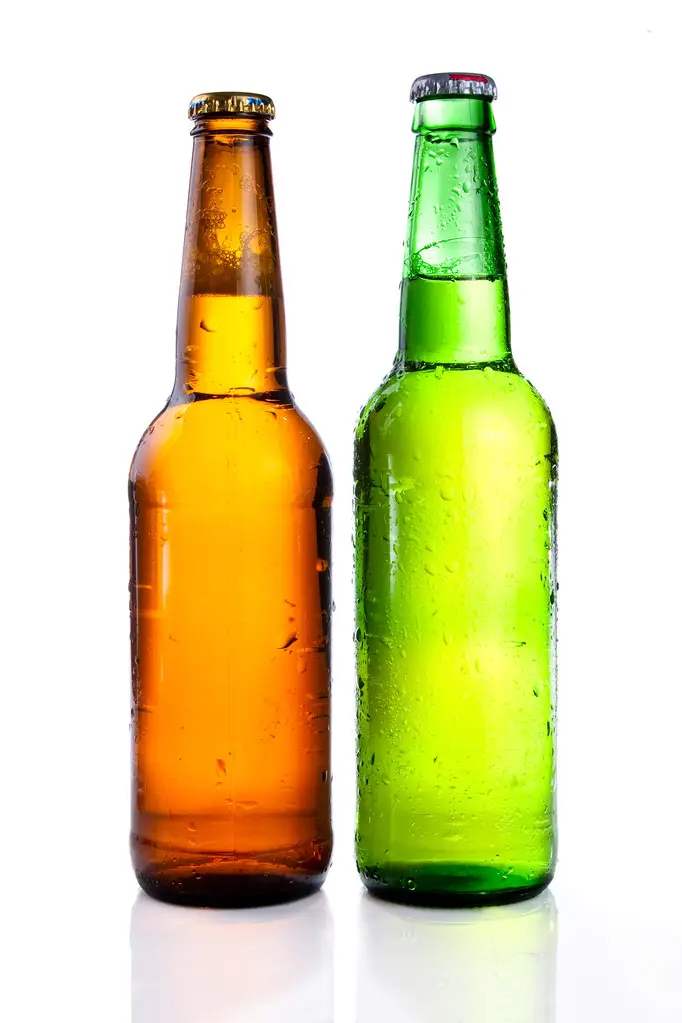Address
304 North Cardinal St.
Dorchester Center, MA 02124
Work Hours
Monday to Friday: 7AM - 7PM
Weekend: 10AM - 5PM
Address
304 North Cardinal St.
Dorchester Center, MA 02124
Work Hours
Monday to Friday: 7AM - 7PM
Weekend: 10AM - 5PM

Many friends can’t help thinking that this is a beer bottle when they see the standard green glass bottle for so many years, but why is beer always bottled in glass? Is this the case with the vast majority of regular beers?
It turns out that plastic is more breathable than glass (glass itself is impermeable to oxygen and carbon dioxide). That said, beer (or other soft drinks) “waters” and becomes flat more easily in a plastic bottle than in a glass bottle, because the carbon dioxide that makes the beer fizzy escapes more easily. Another benefit of glass is that it has no odor and does not chemically react with the contents inside. Plastic, on the other hand, is full of chemicals that have a good chance of seeping into your drink and ruining your beer. Antimony, for example, is often used as a catalyst in the manufacture of polyester plastic containers, and residual antimony can leach into beverages. At room temperature or lower than normal temperature, the antimony content in beverages is harmless to the human body, and once the temperature rises, the antimony content will also increase. Therefore, if the beverage is stored in a closed warehouse for several months in summer or other warm places, the antimony content in it will greatly exceed the standard. Canned beer As for aluminum cans, like glass, aluminum is not very breathable, so it has also become a material for storing beer. Interestingly, the inside of the aluminum can is coated with a special polymer coating designed specifically to infiltrate the aluminum into the drink, making storage of the can easier; as too much aluminum in the body can lead to Alzheimer’s and Parkinson’s disease . Either way, aluminum cans store beverages away from light, protecting them better than other types of packaging.
We actually store beer in glasses, especially green glass decanters, because it protects the beer from the sun. In fact, practical plastic can also be made in the same color, but it may disrupt the existing order of the plastic recycling system. Plastic beer bottles, if made the same amber color as glass bottles, require an extra coating to protect the beer inside and are harder to recycle than the clear plastic bottles favored by the soft drinks industry. There is another problem with plastic bottle packaging: it cannot be pasteurized. After the beer is brewed, there is another very important process, that is, after the packaging is completed, it will be sent to the machine and heated with boiling water to kill the things that may still be alive in the beer. This maintains the quality of the beer and extends its shelf life. Of course, glass bottles and aluminum cans are fine, but plastic bottles are not good if they are scalded by Baidu’s boiling water. Brown glass bottles and green glass bottles did not have special beer bottles in the early days, and green wine bottles were mostly used in the world. Thus, by the end of the 19th century, when special beer bottles began to appear, the tradition of green bottles survived. Brown bottles existed until the 1930s. It has been found that if the beer is bottled in brown, it can make the beer that has been sitting for a long time taste better, and the beer in the brown bottle will be more. Due to its darker color, brown bottles can prevent sunlight from shining on the beer better than green bottles, so as to better preserve the freshness of beer. The brown bottle has become a symbol of high-quality beer. So you can see that most craft beers on the market are bottled in brown beer, while industrial beer is mostly bottled in green.
